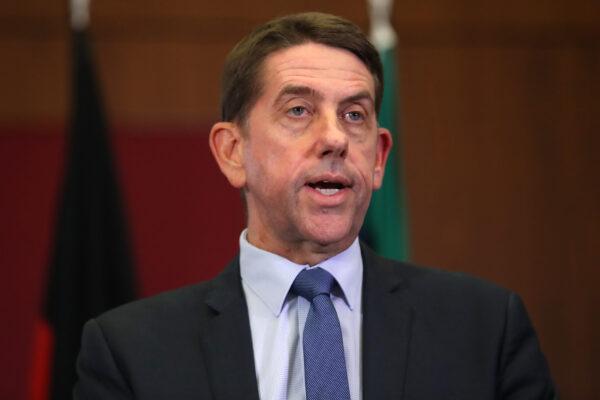Analysis of Queensland’s 2024-25 Budget by The Epoch Times
It has been touted as a cost-of-living budget designed to ease pressure, but a week on, a leading analyst says the Queensland 2024-25 budget is anything but.
The budget released last Tuesday (June 11) marked the start of the 2024 state election campaign, according to a leading financial analyst.
Doctor John Humphreys is the chief economist for the Australian Taxpayers’ Alliance and was a former treasury official working in the Budget Policy Division.
He believes the budget’s sweeteners—including $1,000 (USD $660) electricity hand-outs, increased $200 sporting vouchers for children, a 20 percent discount on car registration and 50 cent public transport are dead giveaways of a short-term budget made to woo voters.
“The nine-year-old Queensland Labor government is behind in the polls, and are attempting to buy back some support,” Mr. Humphreys told The Epoch Times in a statement.
“Many commentators have noticed the cynical timing of these handouts, coming less than six months from the next state election.”
“The government claims they are just listening to the public, who want handouts now.”
Mr. Humphreys said the real political story was more insidious.
“Most of the high-profile announcements in the budget are temporary,” he said.
The Future Of The LNP
He believed that Opposition Leader David Crisafulli would become premier in October (can we report on this?), despite Queenslanders originally giving incumbent premier Steven Miles a chance.
With the Liberal National Party of Queensland (LNP) tipped to win the state election, Mr. Humphreys said the party would be handed the decision on whether or not to allow those temporary measures—or sugar hits—to lapse.
If the LNP continues, it’ll be held responsible for an unsustainable hole in the budget.
If not, the party will be held responsible for higher costs.
“This is bad public policy, but smart Machiavellian political tactics,” Mr. Humphreys said. (=> should we get opposition’s comment on this or anything to contrast? it sounds a bit like accusation)
Car Rego Discount, Stamp Duty Concession, Tax Rebate, Rate Freeze Should Remain
Mr. Humphreys does believe some measures should remain, including the car registration discount and an increase to the stamp duty concession for first home buyers.
He’s also in support of the 50 percent payroll tax rebate extension for apprenticeships, adding he’d like to see it at 100 percent and made permanent.
Mr. Humphreys also thinks a freeze in rates should become an ongoing policy in years where wage growth is negative or stagnant.
“The government has made the absurd claim that their ‘cost of living’ measures will put downward pressure on inflation and therefore interest rates,” he said.
“Of course, the RBA will see straight through the smoke and mirrors.”
$10.8 Billion In Fiscal Deficit
Mr. Humphreys said all state budgets were often reported somewhat incorrectly as they used the wrong metric. => explain why it’s wrong?
“The government announced that the 2023/24 budget will end with an operating surplus of $0.6 billion, but the more honest fiscal balance—which includes capital spending—remains an unjustifiable deficit of $5.7 billion,” he said.
“Likewise, the government announced the 2024/25 budget will have an operating deficit of $2.6 billion, but the fiscal deficit will be a more dramatic—and unjustifiable—$10.8 billion.”
“The fiscal balance remains in deficit in all future years.”
Ongoing deficits will drive up state debt, with predictions of $60 billion by 2028, with public sector gross debt likely to reach $172 billion.
“Both statements are true, but neither are helpful—the best measure of debt is ‘general government net financial liabilities’, which will rise from $59 billion this year up to $104 billion by 2028,” Mr. Humphreys said.
‘Unproductive’ Spending Driving Up Debts
The economist attributed the spiralling debt to the Queensland government’s unsustainable spending.
“It is possible to rack up debt and deficit for good reasons. Unfortunately, that is not what has happened in this budget, with most of the new spending being unnecessary and unproductive.”
“New government policies have increased non-capital spending by $5 billion in 2024/25 alone. The astute reader will note that this is much more than their $2.6 billion operating deficit.”
Mr. Humphreys said if the government had made no spending cuts and went ahead with all the so-called sugar hits, a surplus could have emerged had it not been for swathes of new spending. (=> should this be the main angle?)
“The budget paper lists over 300 policy changes related to spending,” he said.
“Of those changes, literally zero involved a cut to government spending. Zero.”

Going Into Deficit Not An Easy Decision: Treasurer
In introducing the budget, Treasurer Cameron Dick said (link to the speech, statement?) cost-of-living relief was what mattered most to Queenslanders.
Mr. Dick said the decision to move into a deficit was a deliberate one and made to show the government was “on Queenslanders’ side.” (why does a deficit budget mean the government is on people’s side?)
“Delivering a deficit, spending more than the government collects in revenue, is not, and should never be an easy choice,” he said.
He also told state parliament on June 18, “If our budget has to go into deficit to keep your household budget in surplus, then that is what we will do.”
In his budget speech, Mr. Dick referred to the state’s government and its budget as “strong” a total of 12 times.
He said the Queensland Treasury had estimated it could reduce Brisbane’s Consumer Price Index (CPI) growth to 2 percent, while balancing the unforeseen impact of issues like the interstate migration boom.
Timely Investment In Housing
Mr. Dick noted that for Queensland, the increase in population in 2022–23 was 60 percent higher than forecast
“This year, population growth is rising so fast that upward revisions are being revised again, almost as soon as they are published,” he said.
At the end of May, the Regional Australia Institute released its annual report into internal migration within the nation, finding that city dwellers moving to regional areas had hit a 12-month high.
According to calculations, 24 percent more people are leaving big cities for regions than leaving regions for cities.
Mr. Dick cited the government’s investments in housing given the unprecedented population boom.
“Homes for Queenslanders is our vision for delivering one million new homes by 2046,” he said.
“It is a real plan backed by real investment, a total of $3.1 billion over five years.
Targeted Measures Needed To Tackle Cost-of-living Crisis
The Queensland Council of Social Service (QCOSS) launched a report in the wake of the budget, with the ultimate conclusion that Labor could be doing more to ease cost-of-living pressures.
It notes a government of “stark contrast,” one where, it said, the state’s economy has been touted as the strongest in the nation while many Queenslanders struggle with the cost of living.
QCOSS said the budget will not provide any significant benefit to renters, with rent prices continuing to outstrip the CPI and 300,000 Queenslanders having unmet housing needs.
The group praised some measures in the budget, including spending on long-term initiatives including the Homes for Queenslanders plan to increase the number of social homes.
But the cash splash approach hasn’t hit the right targets, it said.
“While we welcome the intent of the recent budget measures in delivering relief in an inflationary environment, QCOSS highlights the need for a more equitable approach to cost-of-living relief,” the report said.
“In 2023-24, all Queenslanders received $550 while vulnerable households received $700 in addition to the $372 electricity rebate.
“In 2024-25, the $1,000 cost of living rebate from the Queensland government will go to all households.”
The organisation has cited a need for more targeted initiatives to address the state’s issues.
Lack Of Response To Youth Crime
The peak body for social services also expressed concern about a lack of connection between support for vulnerable families and responses to youth crime.
There were both brickbats and bouquets from QCOSS in terms of how Labor had handled its spending on crime. (=> can provide evidence about spending on crime in the budget?)
“This budget also includes a significant focus on the needs of victims of crime,” the report states.
“This focus must be expanded to ensure our system can respond to all women, children and men experiencing domestic and family violence.”





